Merriest and happiest greetings! We are covering some fun topics in 2019’s final Dispatch, incuding gearing up for the Newport Bermuda Race (lessons learned can apply to even more modest voyages), a look at a non-marine project our composites team has undertaken, and a sneak peek at the earliest signups for the 2020 Camden Classics Cup. We send all the best tidings to you and yours, and wish you a peaceful and prosperous 2020.
In this December Dispatches:
Bermuda Race Prep Tips from the Pros
Table Built Like a Boat: Weatherend Outdoor Furniture
Celebrate Maine’s Bicentennial at the Camden Classics Cup
Bermuda Race Prep Tips from the Pros
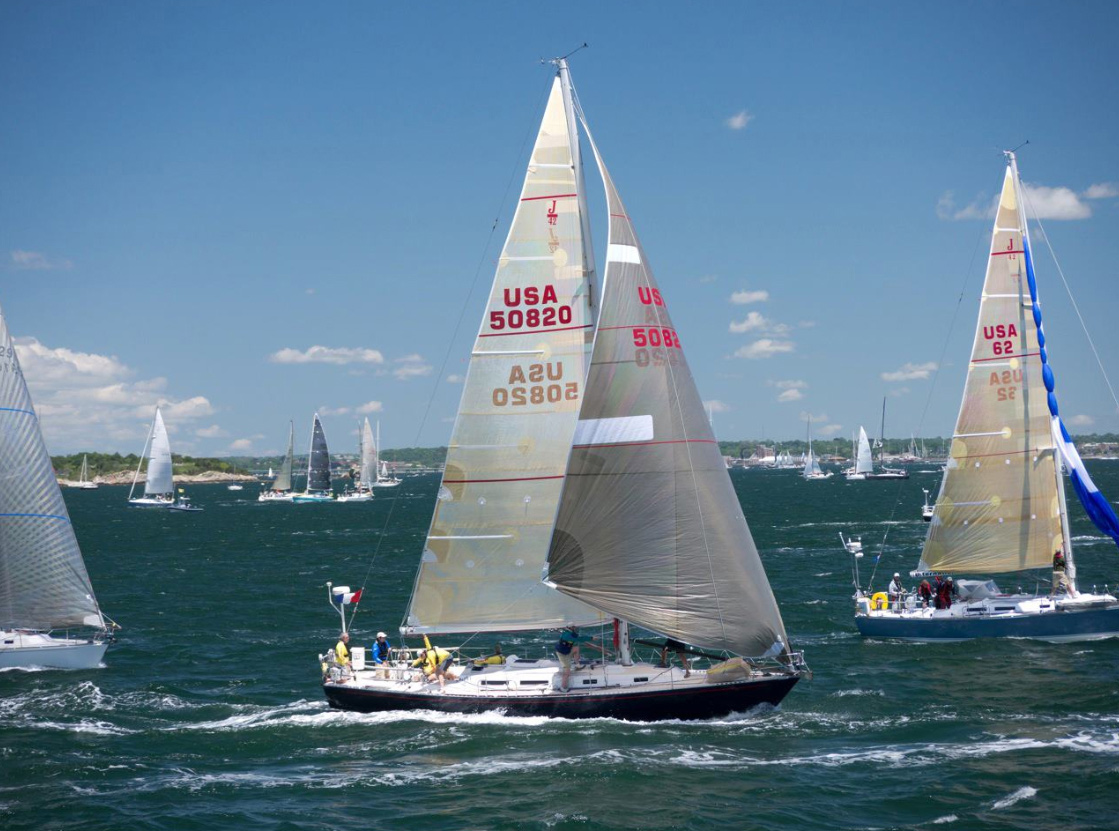
It’s become a 635-mile exploration in loyalty — and Lyman-Morse is there every step of the way. Organizers estimate that more than 50,000 sailors have competed in the biennial Newport Bermuda Race on around 5,000 yachts since its founding in 1906, but no one seems to know exactly how many people have repeated the race.
But repeat the race they do. We know of some sailors and their families who have participated 10 times or more, often in the exact same vessel, over many decades.
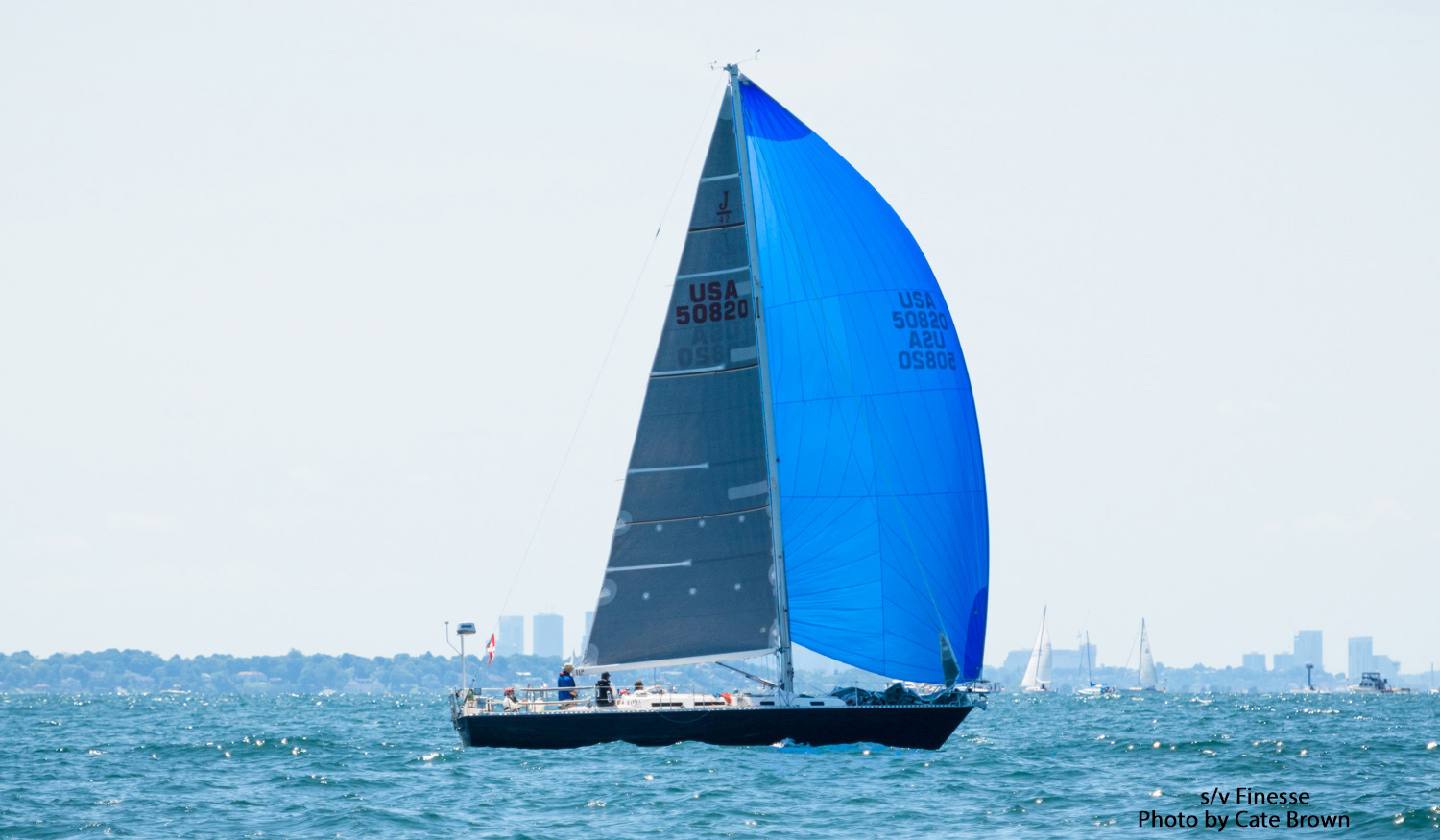 “You’re 300 miles offshore, looking at the most beautiful sunsets and sunrises you’ve ever seen. You are pushing yourself all the time,” says Eliot Merrill, owner of a J-42 Finesse, who estimates he’s entered the event at least 10 times and was part of a crew that won the Glenn Family Participation Award in 2012.
“You’re 300 miles offshore, looking at the most beautiful sunsets and sunrises you’ve ever seen. You are pushing yourself all the time,” says Eliot Merrill, owner of a J-42 Finesse, who estimates he’s entered the event at least 10 times and was part of a crew that won the Glenn Family Participation Award in 2012.
“We are all exhausted when we finish. But it is a real adventure you can’t replicate anywhere else.”
While Lyman-Morse has prepped at least a dozen boats for this and other ocean races, to explore what lessons can be learned from these Bermuda Race repeaters we dug through the dozens of improvements that we have managed on two in particular: A lovely Hinckley 51 named Kiva and Merrill’s J/42 Finesse. Both will be competing in the upcoming 52nd edition of the Newport Bermuda Race, with a start from Newport on June 19, 2020.
“This is a 600-plus mile race that is often won by minutes,” says Lyman-Morse’s Steve Tofield, who has personally competed in the Bermuda Race three times and managed race-related projects on both Kiva and Finesse for decades.
“You can save hours through the judicious application of upgrades.”
Taking Time to Lose Weight and Friction
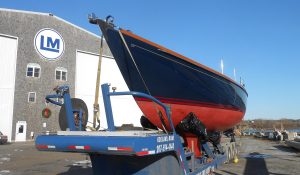 The Newport Bermuda Race might be cold, wet, and uncertain, but the strategic choices are simple enough: One can opt to feel one’s way, as Comanche did in her record-breaking 2016 run, through slower weather to find more wind and speed later. Or, one can try the simpler option of going fast now and letting the future take care of itself. “We pointed the boat as close as possible, headed towards Bermuda,” said Kerry Klinger to Scuttlebutt Sailing News, after he skippered the J/121 Apollo to a class win in 2018.
The Newport Bermuda Race might be cold, wet, and uncertain, but the strategic choices are simple enough: One can opt to feel one’s way, as Comanche did in her record-breaking 2016 run, through slower weather to find more wind and speed later. Or, one can try the simpler option of going fast now and letting the future take care of itself. “We pointed the boat as close as possible, headed towards Bermuda,” said Kerry Klinger to Scuttlebutt Sailing News, after he skippered the J/121 Apollo to a class win in 2018.
But no strategy can survive a breakdown on the Newport Bermuda Race. Both Kiva and Finesse have learned that speed starts with boat preparation. Both boats take the safety protocols that race organizers put in place seriously. Both carry a full range of spares for most major systems, including electronics, propulsion, and navigation. Bottoms are kept smooth. Underwater foils are kept fair.
The Kiva and Finesse programs are ruthless about removing weight aloft and banishing creep and stretch in their rigs. Both programs have invested in all-carbon spars, with Kiva moving to ECsix multi-strand carbon rigging. Finesse is installing an entirely new composite backstay to save weight.
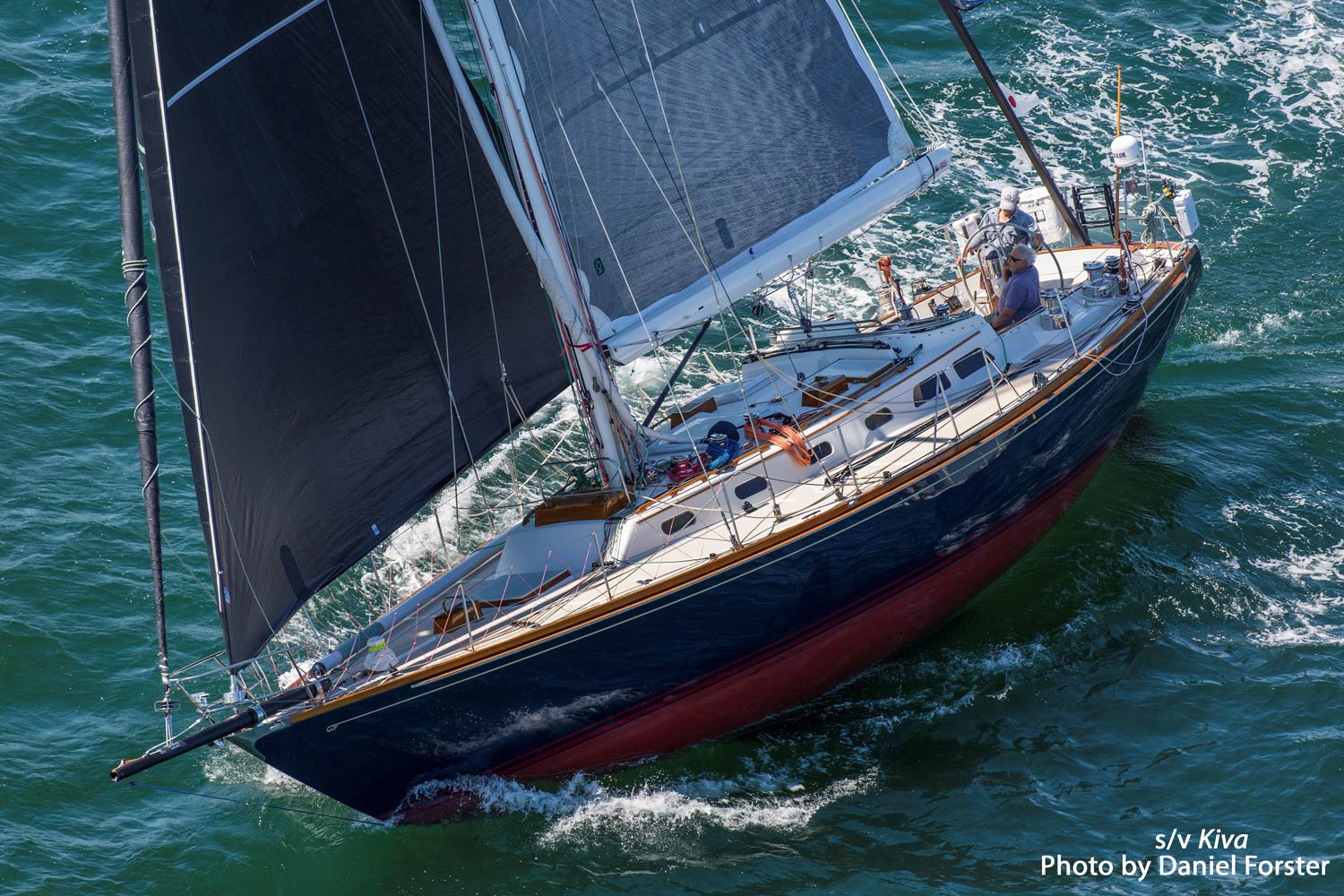 Such light and tight rigs have allowed both programs to exploit the dramatic improvements in sailing textiles that include rope and sailcloth, which racers say is the fastest evolving technology, save electronics. Finesse recently opted for an asymmetrical spinnaker: The team found the new sail easier for amateurs to manage, as well as more efficient in the prevailing winds on the event. Small details matter: Finesse relies on a well-tested sail crossover chart that’s laminated on the door of the head next to the galley to make proper sail combinations obvious to all.
Such light and tight rigs have allowed both programs to exploit the dramatic improvements in sailing textiles that include rope and sailcloth, which racers say is the fastest evolving technology, save electronics. Finesse recently opted for an asymmetrical spinnaker: The team found the new sail easier for amateurs to manage, as well as more efficient in the prevailing winds on the event. Small details matter: Finesse relies on a well-tested sail crossover chart that’s laminated on the door of the head next to the galley to make proper sail combinations obvious to all.
Crew ergonomics is also seriously considered. Exhaustion, hypothermia, and adrenaline burnout are real risks. Kiva is campaigned as a two-handed entrant; lines are run carefully aft. But Finesse is raced fully crewed. Her new traveler controls are being installed to move mainsail control away from the helmsperson; it’s easier for her crew and, as the quote printed on the stairs visible to all when climbing into the cockpit says, “Steering is a full-time job.” Belowdecks, a movable carbon fiber bunk was retrofitted on the centerline so crew can rest more comfortably. She also recently upgraded the mainsail preventer for ease of handling during maneuvers.
“We have a simple philosophy. Let’s be safe. Let’s have fun. Let’s eat well! And then, let’s do well,” says Merrill. “We are all taking vacation days to do this. We are here to have fun.”
Table Built Like a Boat: Weatherend Outdoor Furniture
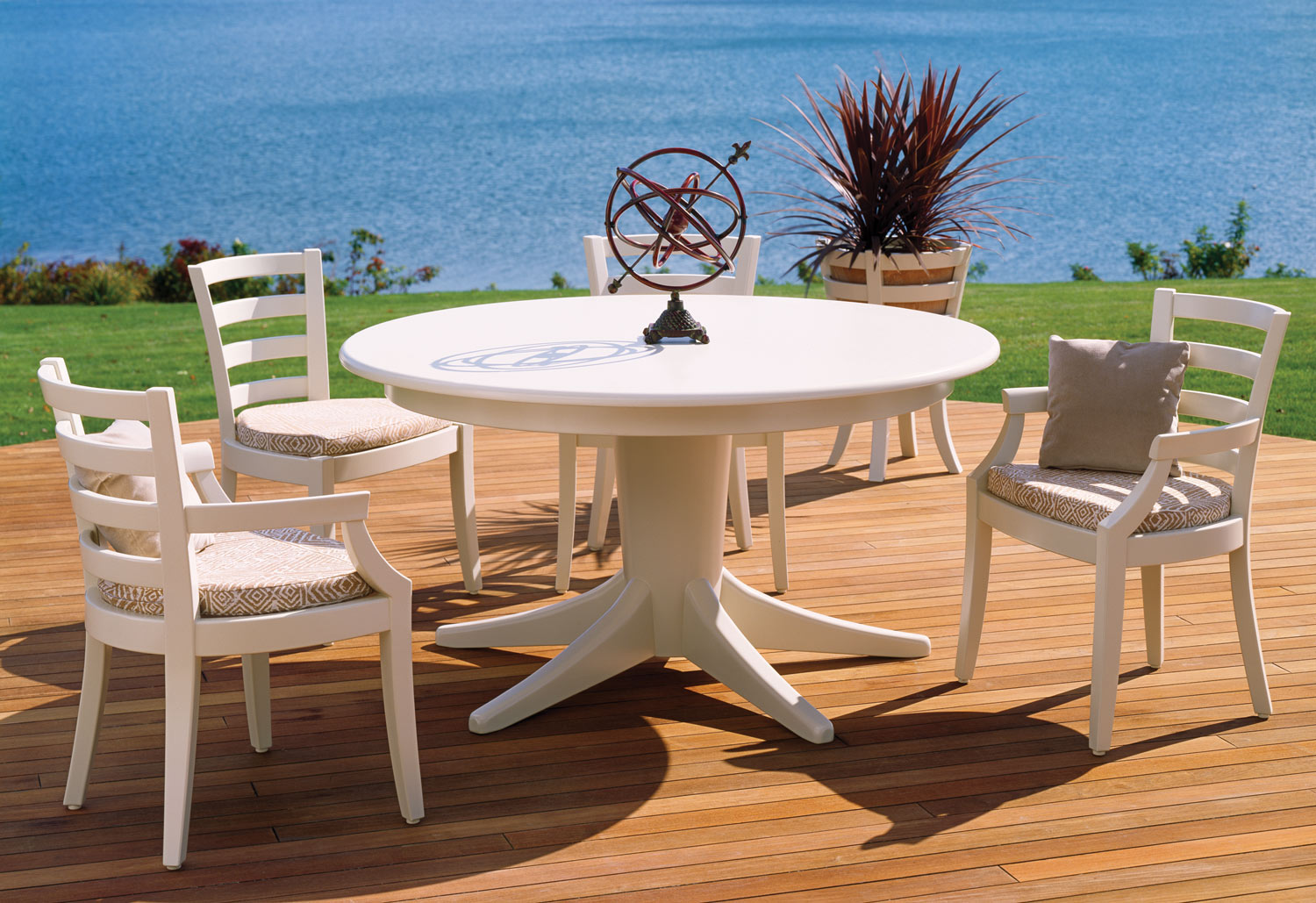
About 35 years ago, Gil Harper had an idea: Build the best furniture as you would the best boats. So he, some friends and family started Weatherend Estate Furniture in Rockland, Maine. Since then Harper and his firm have pioneered the use of vinylester resin , laminated curves, and yacht finish for outdoor furniture.
“Weatherend is recognized as the premier outdoor furniture maker, for a wide range of commercial and residential applications,” says Maureen E. Staples, who manages the marketing and graphic design.
Starting about a half decade ago. Weatherend contacted Lyman-Morse to craft pieces like this Yachting Round Pedestal Dining Table. Building such a unit takes careful planning. The Composite Shop starts with our Haas GR 712 computer numerically controlled cutting device to precisely cut a full, 48-inch diameter tabletop. We then cut the core to a variety of thicknesses ranging from ¾”-2”high-density foam. This rigid structure acts as the base for the 1/8 inch of fiberglass that is applied over the top, bottom, and sides of the core.
But Weatherend is strict that — like a boat’s hull — it’s furniture must be perfectly fair, and all its edges be flush, smooth, and watertight. So LM uses its composite engineering expertise to plan out a series of layups, where the sides of the circular core are coated and cured first. Only then, when the full edge surface is structured, can the top and bottom of the table be encapsulated. After which, all three surfaces are puttied, faired, and primed.
Crane estimates that between 30 and 80 man-hours go into creating each 1-inch thick table-top. Like our hulls, the piece will also be stable, weather resistant, and can last for generations. Its Awlgrip mirror-like surface will also be seriously easy to clean. It will be the table the grandkids will fight over for years to come.
Celebrate Maine’s Bicentennial at the Camden Classics Cup
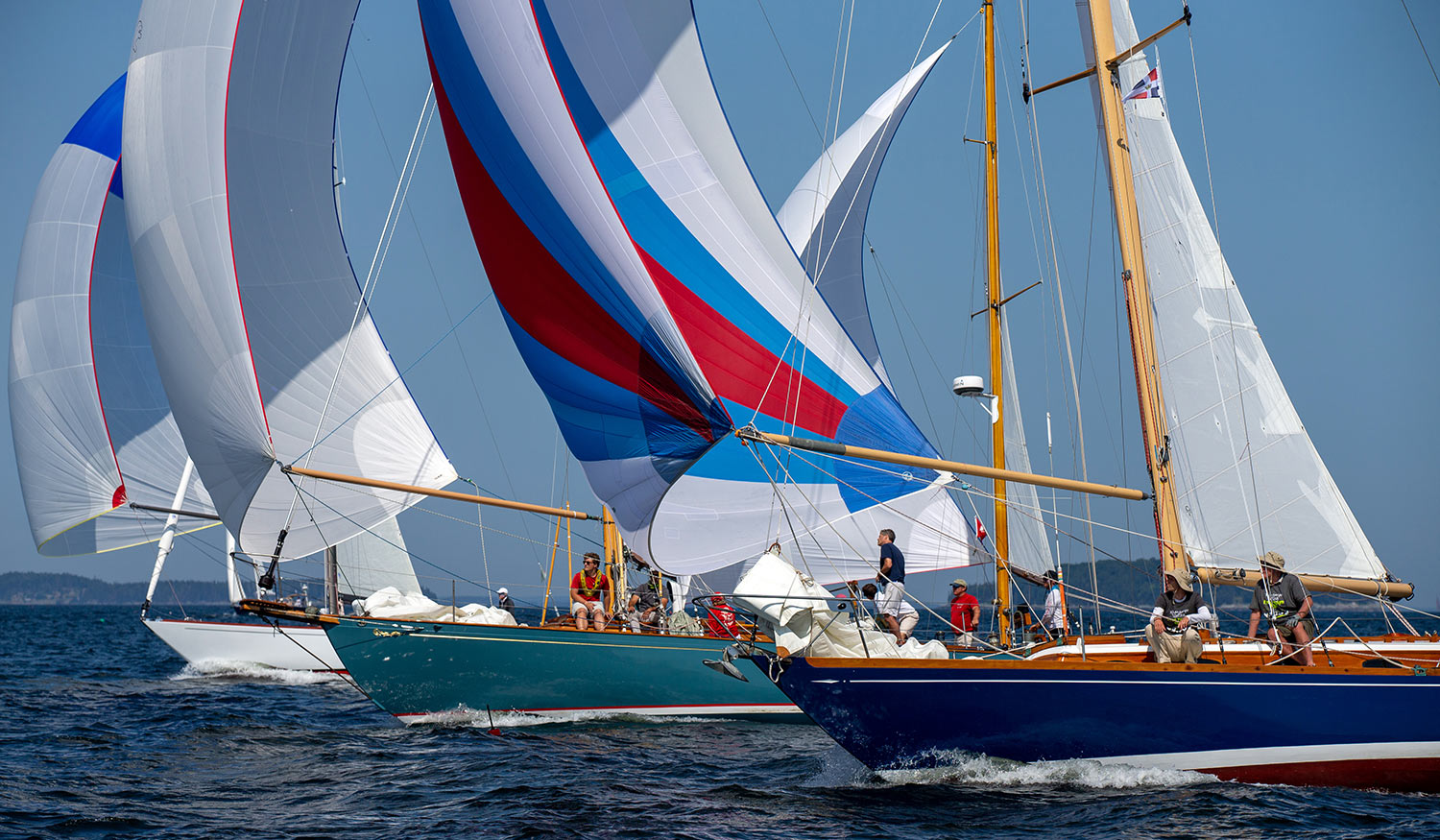 Maine celebrates its bicentennial in 2020, and what better way to celebrate it than to participate in some of the finest classic yacht racing on the planet? The fifth annual running of the Camden Classics Cup is scheduled for July 23-25, 2020, and with steady growth in participation, more classes than ever, and new community events this regatta has become one of New England’s hallmark sailing competitions. The scratch sheet grows daily and we expect even more entrants than last year’s record-breaking event, so do not delay entering! Dockage is included in your registration fee (while it lasts) thanks to Stephens Waring Yacht Design‘s sponsorship.
Maine celebrates its bicentennial in 2020, and what better way to celebrate it than to participate in some of the finest classic yacht racing on the planet? The fifth annual running of the Camden Classics Cup is scheduled for July 23-25, 2020, and with steady growth in participation, more classes than ever, and new community events this regatta has become one of New England’s hallmark sailing competitions. The scratch sheet grows daily and we expect even more entrants than last year’s record-breaking event, so do not delay entering! Dockage is included in your registration fee (while it lasts) thanks to Stephens Waring Yacht Design‘s sponsorship.
Want to make sure you don’t miss next month’s Dispatches? Click Here to have them sent directly to your inbox.
